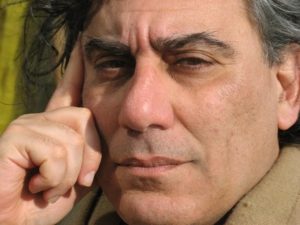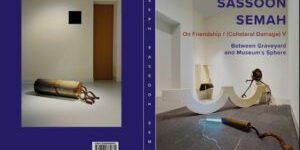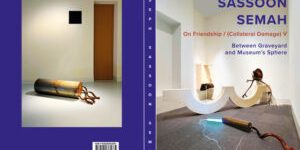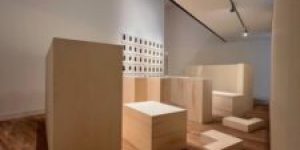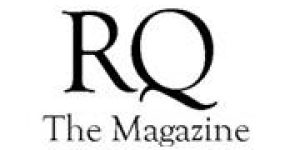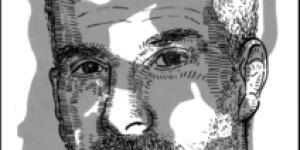On 26 November 1965, Beuys conducted a performance in a gallery holding a dead rabbit in his arms. He named the performance: “How to Explain Pictures to a Dead Hare”. Beuys died on January 23, 1986. And on 24 February 1986, Semah created his own performative answer to Beuys with the installation: “How to Explain Hare Hunting to a Dead German Artist”.
In our conversation, Semah states: “Well, they are not going to criticise him when they celebrate these 100 years. That’s why we talked with Arie Hartog, director of the Gerhard Marcks Haus museum in Bremen. We decided to answer with an art project that will be presented in the Gerhard Marcks Haus, the University of Amsterdam, the Jewish Museum of Amsterdam and Goethe Institute of Holland. The event will be showing different critical points, mainly from my perspective not only as an artist that has been inspired by his work. I will elaborate on my experience of his work as a Jew.”
Mati Shemoelof: For those who do not know, “hare hunting” was a euphemism for killing Jews by the Gestapo during the Holocaust. Your performance in 1986 was part of an exhibition in the Gerhard Marcks Haus, in Bremen, that once belonged to the Gestapo headquarters.
Joseph Beuys died on 23 January 1986 and my birthday took place about a month after his death. Now, because he died, I could transfer the title “How to Explain Pictures to a Dead Hare” to the title of my performance: “How to Explain Hare Hunting to a Dead German Artist”. Germany was not the Germany of today. Beuys was busy with reconstruction of “Germania” and holding us, the Jews, as a dead hare. The question should be different. In my opinion, Beuys only cared about his own wounds.
You did a public confession for your actions as an Israeli soldier in Amsterdam but Beuys never confessed to his Nazi past. In your eyes, why didn’t he?
It surprised me that Joseph Beuys didn’t do a confession about his involvement with the Nazi army. I wanted to criticise that. In 1936, Beuys was a member of the Hitler Youth. I know that it was compulsory. But actually, later on, in 1941, Beuys volunteered for the Luftwaffe (air force). In 1942, Beuys was stationed in Crimea and was a member of various combat bomber units. He actually volunteered. Nobody asked him. He dropped bombs on innocent people. In his brilliant way, Beuys transformed his subjectivity to the suffering of the German soldier in the Second World War. In that odd way, Beuys became a victim.
One of the famous phrases of Beuys is “every man is an artist”. Beuys was part of the Düsseldorf art school where he demanded that the school open its door to anyone who wanted to be an artist. The art school kicked him out because of his radical demands. Can you elaborate more about your artistic answer to Beuys?
I created a similar environment in my performance in Amsterdam. I sat on an aluminum office cabinet with a chair that belonged to a Gestapo waiting room in Berlin. I had a wine glass on the window. A neon light under my chair. In between copper plates I had a Talit (a Jewish prayer shawl). I was holding a hare which I cast from bronze. One of the code words of the Nazi Wehrmacht was “jagt den Hasen”(“hunt the rabbits”). And they meant: we are going to hunt the Jews. Beuys could have chosen any other animal. But of course, he chose the hare. He walked with the dead rabbit into the gallery, where he did the performance and explained to him the paintings that he did with his own blood in a language that nobody understood. I concluded that he tried to speak with the hare in Hebrew.
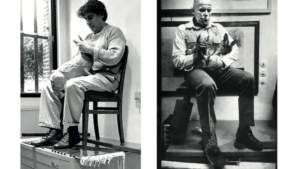
Joseph Sassoon Semah created the performance “How to Explain Hare Hunting to a Dead German Artist” (left), answering Joseph Beuys’ “How to Explain Pictures to a Dead Hare” (right).
The art historian and curator Gideon Ofrat wrote that you converted Beuys to Judaism. In one hand, you were holding the rabbit and the other was placed on your forehead to symbolise pain and at the same time deep thinking. There was a neon light on the wall, symbolising God’s eternal light that answers the cross that was underneath the chair and the wine glass – symbolising the cruxifiction of Jesus Christ. Have you met Beuys?
I met him twice. Once in Berlin, at the National Gallery. He was a kind man. He invited me to his home but I didn’t go. We met again, also in Berlin, just before I left for Amsterdam at the beginning of the 1980s, and talked for half an hour. Yes, he was aware of my work, but he was the clean, pure face of Germany after the Second World War – and I was just a young artist.
It sounds like you have a love-hate relationship with him. On one hand, so many of your artworks are in dialogue with his art. On the other hand, you can’t stand the position that he took as a victimiser in German and European art. And so, I have to ask you, why didn’t you go to his house?
Maybe I wasn’t really occupied with him at that time. Maybe postwar Germany wasn’t really in my focus. Around 1982, I left Berlin and it was easier for me to work in Amsterdam. In 1982, I wrote a letter to Albrecht Dürer [German painter, 1471-1582] and explained to him my thoughts on Luther and Beuys.
If Beuys was alive, how do you imagine his reaction to the Jewish performance you created in reaction to him?
In his ironic way, he would have rejected me. He did already with the hare – holding me, a dead Jew – in his hands.
Hans Peter Reiegel, one of Beuys’ biographers, mentioned that many of Beuys’ patrons and friends hid their Nazi past. From Beuys’ incident in the Luftwaffe – his plane was shot down – Beuys fashioned the myth that he was rescued by nomadic Tatar tribesmen, who wrapped his broken body in animal fat and nursed him back to health. According to his version, they told him: “Nje nemiecky, du Tatar” – “You are not a German, you are a Tatar”. Records state that Beuys was conscious, that he was recovered by a German search commando, and there were no Tatars in the village at that time. But people still believe his version of the story and that Beuys could transform German society. Do you believe in the power of Beuys’ transformation?
Beuys was a soldier who returned from war and starting to create through his personal pain. He transformed himself from a victimiser to a victim. I don’t really trust this social order he created.
Beuys had an enormous influence on Israeli art in the 1970s when it comes to healing – especially when it comes to selected works of Tamar Getter, David Ginaton, Moshe Mizrahi and others. In 1973, David Ginaton went to Josef Beuys’ home in Düsseldorf, after not finding him at the academy. He knelt in front of the artist’s house as if he was a god.
When Ginaton kneeled in front of the house of Beuys, I found it so sad to see. I guess it should be the other way around. And you can see the power of symbols. I don’t know why he did it. Ginaton was an Israeli soldier who was in Germany. Maybe the fascination of soldiers was connecting them.
Why do you take a different perspective to that of the European Israeli artist? Do you connect it to your Baghdad origins? Is the entering of the Nazi ideology into Iraq connected in some underlying way to your criticism of Beuys’ work? You were born in Baghdad in 1948. Your grandfather, Hacham Sassoon Kadoorie, was the chief rabbi of Baghdad’ s Jewish community until his passing in 1971, even after they had all emigrated to Israel.
Of course. It is not only about the Germans. It is about Western ideology. And it affects the whole cultural world, including the works of Beuys. And of course, indirectly, it affects the life of Jews in the Arab world. The word “antisemitism” can’t be taken seriously in the Arab lands because they are also semitic. Well, I am a Babylonian Jew and I don’t succumb to all of the construction of silence around Beuys. I am free from it. I can read it in a totally new way. It took me time.
–
This article was submitted as part of our Open Source initiative. With Open Source, Berliner Verlag gives freelance writers and anyone interested the opportunity to contribute articles containing relevant content and written to a professional standard. Selected contributions will be published and paid for.
This article is subject to the Creative Commons licence (CC BY-NC-ND 4.0). It may be freely reused by the general public for non-commercial purposes on the condition that it remains unaltered and that the author and Berliner Zeitung are attributed.
